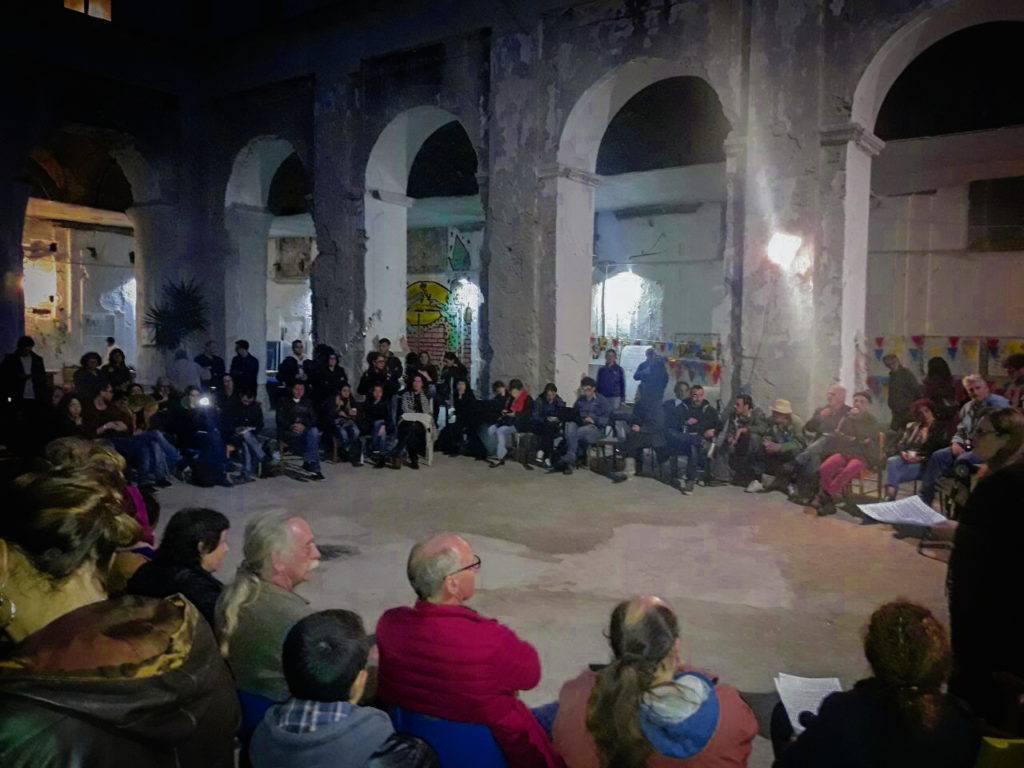The City’s Network of Neapolitan Commons is made up of urban spaces that had fallen into disuse and that free citizens have made accessible for collective use, enhancing them and giving them back to the free use of the entire community. This practice, distinguished by the spontaneous emergence from the grassroots, characterised by the requalification and redefinition of public space, has since found expression in a legal institute recognised by the pertinent territorial authorities, known as the ‘urban commons civic use’, a case study in Italy and abroad since 2012.
What is a common good?
From an economics perspective, common goods are all those goods that we use together (parks, pastures, the atmosphere, the sea…) but which, and herein lies the difficulty inherent in common goods, if those who use them are motivated only by their own interests and not by those of the community, risk being destroyed by neglect and disuse, even if no one intended that in the first place. In order to preserve a common good it is therefore necessary to change values, so that the good is no longer seen as no-one’s good, to be enjoyed freely, but as everyone’s good, including ours, and that of the generations yet to come.

A common good is water, work, cultural heritage, land, beaches: the community, us. Common goods are all those goods that belong to the whole community and whose use cannot be traced back to a single person or be controlled (e.g. street lights). Common goods, given their lofty purpose, belong by their very nature to everyone and never to anyone in particular: that is why they are meant to remain common and cannot be assigned to someone by depriving someone else of their use, even temporarily. Therefore, these special goods are common and can never be private. Their use can, or rather must, be regulated but in order to guarantee that their nature remains unchanged: that is, that they are and remain inclusive and inclusive and can never be exclusive or exclusive, not even temporarily or by the will of the community that lives in them at a given time and which is always changeable (in this sense there is no directive, and not even an internal community and an external community of the commons, but everyone is part of it, always, and can participate in it). The commons, which can be both tangible and intangible, in this sense are defined as belonging collectively and their management and use must be shared and (com-)participated in, and never exclusively someone’s.
What is meant by Neapolitan urban commons?
In 2011, groups of citizens identified these disused assets around the metropolitan city of Naples with the intention of restoring them to public use. They then self-organised into communities in order to restore the use value to which these spaces were destined and give them back to the entire active citizenship. With an act of civil disobedience, these living bodies of the human fabric on the territory mobilised themselves and, by giving themselves virtuous practices of self-education and self-organisation, gave life to paths of urban and human regeneration and civic development, forming, from the bottom up, real communities, free and horizontal, around a space, which the City of Naples recognised as deserving of common interest so that they could be protected in the best possible way. Naples was the first Italian city to set up a special Department for Common Goods, and amended its municipal statute to introduce the legal category of the common good among the city’s fundamental values. This site deals precisely with allowing the Neapolitan urban commons to become autonomous and communicate their activities as widely as possible, leaving traces of them so that this good practice, whose validity grows as it spreads, can be passed on.